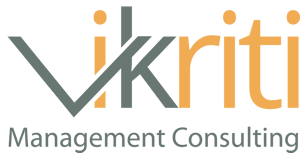
Optimizing Business Strategy and How it Affects Talent Strategy
Authored by Ayesha Rajan, Research Analyst at Vikriti Management Consulting
Introduction
The success of a business is often measured by profit, however, that does not always tell the whole story – especially for lasting businesses. Businesses looking at the long term success of their companies know that quarterly or yearly measurements of success are important but not all encompassing. When developing tools for an enduring company, two key factors are business and talent strategy; in this article, we will look at frameworks that discuss these concepts and how to measure their success.
Discussion
Talent strategy often follows a business strategy so we’ll start off our discussion with business strategy. The Predictive Index categorizes all business strategies into four types: cultivating, exploring, stabilizing, and producing. Cultivating strategies focus on internal improvement by promoting a family-like culture that strives to promote internally, increase employee retention and engagement and improve employee loyalty. Exploring strategies are useful when a company is fostering a new vision and sets goals such as creating a new team, department or line of products. The ultimate intent is to redefine the company’s brand or market perception through marketing these newly developed products or internal structures. Stabilizing strategies seek to improve long-term planning and budgeting for companies by increasing reliability and efficiency of production and/or cutting down on wastage through the implementation of new processes, systems or structures. Finally, producing strategies focus on being a cutting edge market competitor by investing time and money into sales and marketing, as well as creating incentives, such as better pricing options, to drive growth and/or market share. The Predictive Index suggests that companies reevaluate their strategies up to every 6 months but no longer than every two years in order to remain aligned on the current strategy or change course when/if needed.
Good employers often avoid thinking of employees in terms of numbers – employees should be team members and contributors. However, The Predictive Index reports the “average company spends 64% of total costs on labor,” so at the end of the day, employees do represent a lot of important statistics and measurements for a company. The good news is that being a statistic is not always a bad thing; executives also attribute 72% of their company’s value to its employees. So, although they are a company’s most expensive asset, employees are also deemed a company’s most valuable asset. Despite the clear connection between a company’s employees and its value, only 1 in 3 executives have a talent strategy in place and even fewer have a strategy that is well-understood throughout the company. Another incentivizing statistic is that companies who optimize their talent strategy often outperform their market competitors and find that they have higher performing employees. So how do companies align their talent strategy with their business strategy? This ties back to how often a company reevaluates its business strategy; a company cannot simply pause and start hiring at will, their hiring strategy must follow the overall goals of the company. When focusing on cultivating and stabilizing strategies, a company will likely not be hiring abundantly, but rather promoting internally or investing specifically in certain departments. However, when a company is using exploring or producing strategies, it might end up seeking to increase its talent base and will begin searching for candidates to strengthen its team.
Conclusion
Determining the business strategy of your company is extremely important – having a strategy in place determines the goals and vision of a company, as well as the environment and culture that brings those visions to life. A good business strategy also identifies and influences hiring trends and methods for human resources by giving them a direction towards expansion of their employee base or internal promotion. All of these factors are often determined by an executive team whose expertise in their industry or field gives them the foresight to predict what their market or, more specifically, company can or should focus on in a given time period.
